How to breed and care for chamedorea?
Hamedorea - a tree or shrub of the Palm family. The homeland of this houseplant is the mountains of central and southern America.
Content:
- Description and types of hamedorea
- Plant propagation methods
- How to care for a room palm?
- Hamedorea transplant
- Diseases and pests
- Using hamedorea in the interior
Description and types of hamedorea
Hamedorea is popularly called the bamboo palm tree. Its name means "low gift" in translation. This is due to the plant's fruits hanging low to the ground. The fruits are small. The plant in the wild reaches 2 m, indoors slightly lower, 1.2-1.5 m.The stem at the base reaches 3 cm.
Some gardeners and designers plant several hamedorea plants in one pot, so you can get real bamboo thickets.
The plant can bloom not only in spring. But for this she needs to feel in great shape. Hike flower brush on a mimosa branch. The flowers of the chamedorea are different, there are male and female. The first ones do not smell, the second ones have a delicate aroma.
Views:
- Graceful (Neanta beautiful), 1.5 m high, has a thin bare trunk, decorated with one or more feathery, pointed leaves of a dark green color. 6 sheets by the bush. Flowers are yellow-orange in color, fragrant. Can grow in partial shade.
- Monochromatic up to 3 m high. In appearance it is similar to Graceful, but the leaves are longer and narrower.
- Ernest Augusta is a shrub 1 m high. The trunk is like a reed, the leaves are two-lobed. An adult bush has about a dozen of them. The flowers are reddish. Aerial roots grow in the nodules of the stems. To propagate the variety, it is enough to cut the shoots with aerial roots, put them in water for several days. Then they are planted in the ground, covered.
Tall grows indoors up to 3-5 m. The length of the leaves with 14 pairs of leaflets reaches 1.5 m.
Plant propagation methods
The chamedorea plant can be grown:
- From root shoots. Easiest to grow from root shoots. The sprout is separated from the main plant and transplanted into a small pot. In this case, it is not necessary to remove the entire plant from the dish. Several sprouts can be placed in one pot at the same time.
- By dividing the bush... By dividing the bush, they are propagated when transplanting into a new pot. They take the flower out of the old dish, divide it into parts so that the lump of earth is damaged as little as possible.
- From seeds. The most difficult and troublesome way is growing from seeds. To get them, female flowers are pollinated with a soft brush, transferring pollen from male flowers. When the seeds are ripe, they are harvested. Sow only fresh. Immediately after collection, soak in a growth promoter. You can use plain water. Remove the soft shell from the fetus. Scarification is carried out, destroying the integrity of the seed coat. They sow it into the soil, moisten it. The temperature is maintained at 25 ° C. Cover the surface of the pot with foil or glass. They are installed in a warm place so that the dishes with the pot do not interfere with anyone. After all, it will stand for a long time before the sprouts appear, from 1 to 6 months.
Home seeds germinate much faster, in about a month and a half, purchased seeds take longer. And then they will grow very slowly.
How to care for a room palm?
Hamedorea is great for indoor cultivation. In summer, the temperature is in the range of 19-26 ° C. In winter, she does not need a rest period. The minimum will be 12 ° C. If the room is cooler, the roots will ache and disappear. The temperature is reduced gradually.
The bamboo palm is placed in a lighted place, but not in direct sunlight.
It is better to install it so that the sun's rays glide slightly over the leaves throughout the day without causing burns. If the flower stands on a sunny window, in the summer it is shaded from 10 am to 5 pm. So that the bush does not lose its rounded shape, it is periodically turned around its axis. So the plant will be evenly illuminated.
The most difficult thing is to ensure sufficient air humidity. It must be at least 50%. To do this, the flower must be sprayed daily with warm water. The procedure is not carried out only in winter at a temperature of 16-18 ° C, if the room is damp enough. If the air is dry, keep moisturizing the leaves.
Plant care recommendations:
- Spray and watered with settled water, in the summer they use rainwater. If there is no opportunity to spray every day, a container of water is installed near the plant pot. If there are several plants requiring humidification, install a humidifier. Chamedorea leaves react well to water procedures: shower, wiping with a damp cloth. Water the plant carefully so that the soil in the pot does not become waterlogged and the roots do not rot. Water after the top layer of the earth dries up. Pour water from the pan 15 minutes after watering. But it is better not to water with a lot of water, because lifting a heavy pot or tub is not easy. Water is often watered in summer than in winter. The higher the temperature, the more water needs to be added. Ventilate the room regularly without leaving the flower in the draft.
- Fertilize the soil from April to August 2 times a month. Experts advise using only special fertilizers for palm trees, bought in flower shops. Their form is granules or solutions. Can be used complex mineral fertilizers.
- Form a crown by cutting off old, diseased, damaged leaves. The procedure is carried out with scissors wiped with alcohol. Leaves are cut closer to the root system in order to remove pathogens with them. After that, the cut site is disinfected.
Hamedorea transplant
Young palms are replanted annually. As the hamedorrhea grows older, it becomes more difficult to do this. Therefore, the transplant is carried out every 3-4 years or even less often. In the intervening years, a fresh nutrient mixture is added, having previously selected the upper part of the old soil.
The reason for transplanting may be:
- Pot too small.
- Slowing down of flower growth.
- Root disease.
A pot is prepared, the diameter of which is 3 cm larger than the previous one. If it is not new, disinfect it first. A loose nutrient soil is prepared, which should consist of several terms in equal parts:
- Sod land.
- Peat.
- Humus.
Perlite is added. Components (except perlite) are disinfected in the microwave for 15 minutes. A palm tree will grow well in the soil of coniferous and leafy soil, humus. Add vermiculite, coconut chips, charcoal or sand. Chamedorea transplant soil can be purchased at a flower shop. For her, soil for palm trees, dracaena or universal soil for indoor plants is suitable. A drainage layer of expanded clay, fine gravel, river sand is laid at the bottom of the pot.
Chamedorea is transplanted by the transshipment method. The flower does not like when its roots are shaken, cut or other procedures are carried out. The soil under the plant is moistened before transplanting so that the roots easily come off the walls of the pot. If the transplant is carried out due to a root disease, you cannot do without pruning and drying. The old earth is shaken off, the damaged roots are cut off. Wash, sprinkle with crushed charcoal.
Diseases and pests
When grown in a dry room, dark spots appear on the leaves of the plant, the tips dry out. It is necessary to increase the number of sprays or place a humidifier near the plant. If they turn yellow immediately after transplanting, this is a natural reaction, so there is no need to worry.
The water should not stagnate in the pot, otherwise the roots may rot. The fact that this happened is evidenced by the following signs:
- The smell from the pot became rotten and unpleasant.
- The base and stems darken.
- The leaves turn yellow.
If this happens, not only old, but also young leaves die, they urgently stop watering, and the plant is transplanted. They are planted in a new dish, having laid a thick layer of drainage before this.
Hamedorea is affected by pests of indoor plants:
- Spider mite.
- Mealybug.
- Shields.
Most often, pests settle on plants growing in dry rooms or with overdried soil. The fact that they appeared is evidenced by spotted leaves and pink rot. The scale insects are easy to spot on the leaf stalks. Chamedorea is quickly isolated from other flowers, treated with tobacco dust infusion. If this does not help, they are treated with Fitoverm, Aktellik or others insecticides.
Using hamedorea in the interior
Hamedorea is increasingly attracting the attention of designers. They like their beautiful appearance, resistance to diseases, the ability to grow in light and shaded rooms. Hamedorea decorates private houses and apartments.
It is increasingly grown in offices, public spaces, and winter gardens.
Its large leaves purify the air from carbon dioxide and fill the room with oxygen. They neutralize some harmful substances that enter the room from ajar windows: benzene, trichlorethylene. An adult plant can be installed in the walls between windows or in the corner of the room. Most types of chamedorrhea can grow successfully under artificial lighting.
Young plants are used to create original compositions in glassware. It grows slowly, so it can stay there for a long time. Do not install hamedorea near the entrance to the house or in a draft, in places where the air temperature changes dramatically. In the summer, the plant is brought out in a pot on a balcony or veranda.
More information can be found in the video:




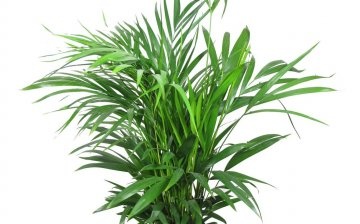
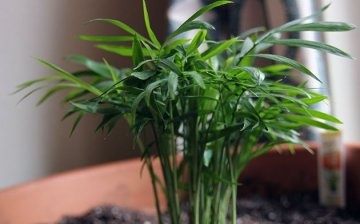

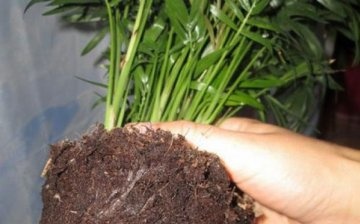
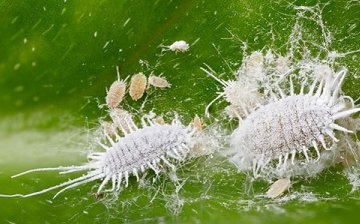








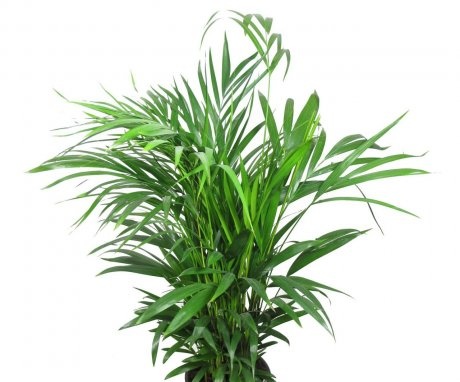

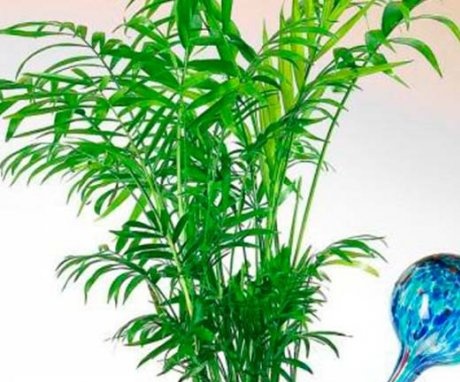



Hamedorea stands on the windowsill, care is primarily watering and feeding, and the best place in the apartment for this flower is the eastern windows. I think this is correct! What do you think?
I bought Hamedorea myself, I really liked the flower. And everything went well for us: she had enough light and watered it on time, but then something went wrong - the leaves began to turn yellow, and then the plant completely died. I think I flooded it in the winter. I support eastern windows, but I have none.